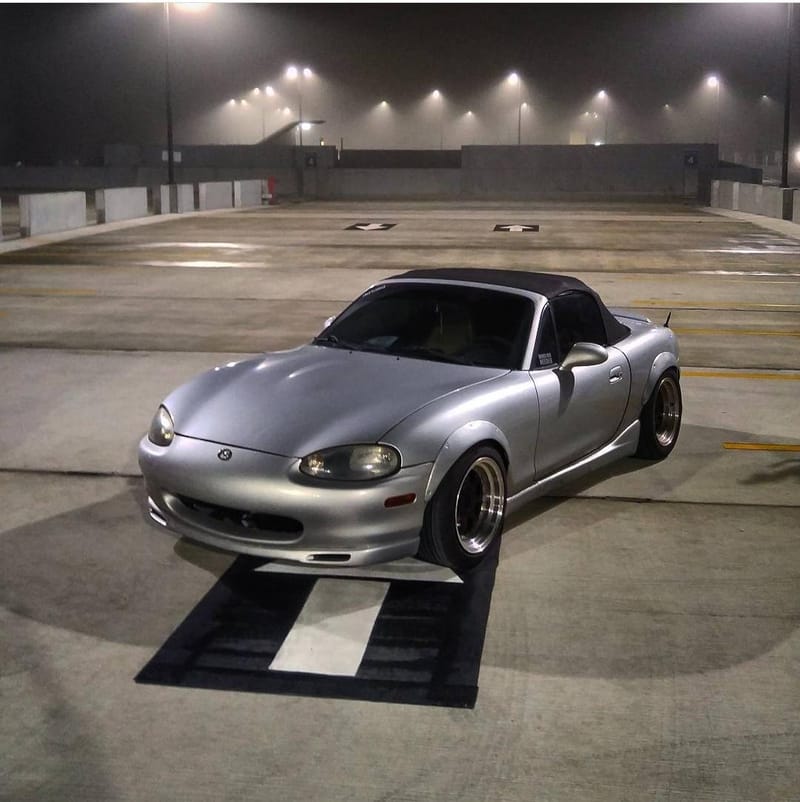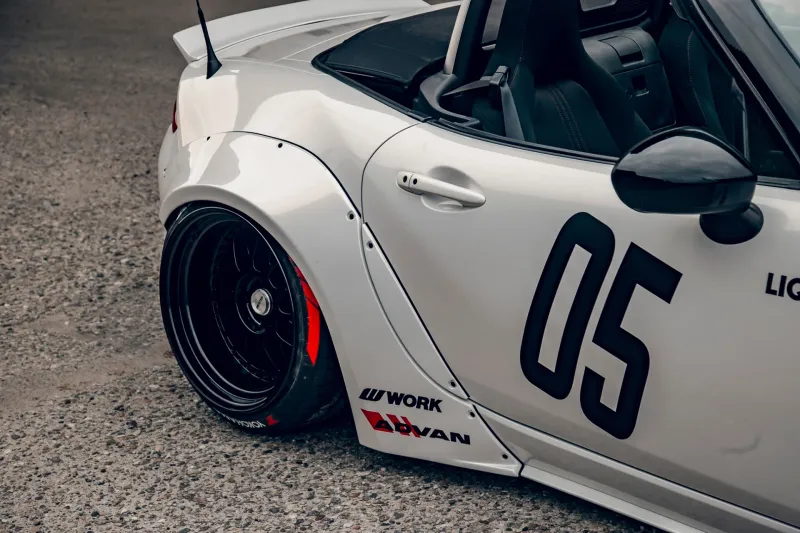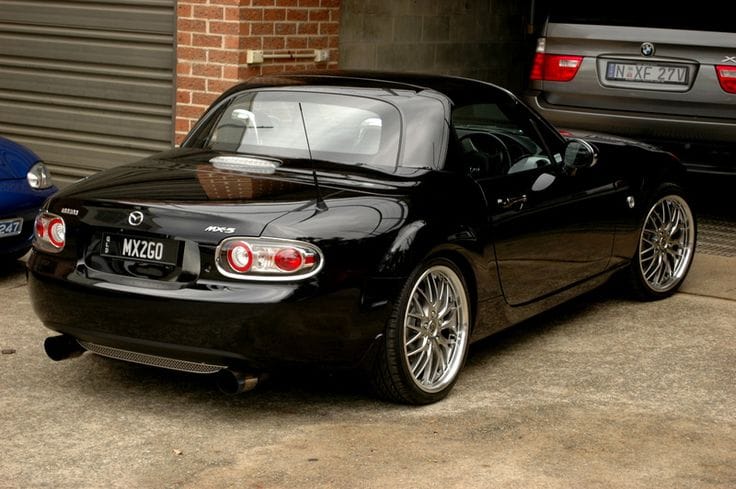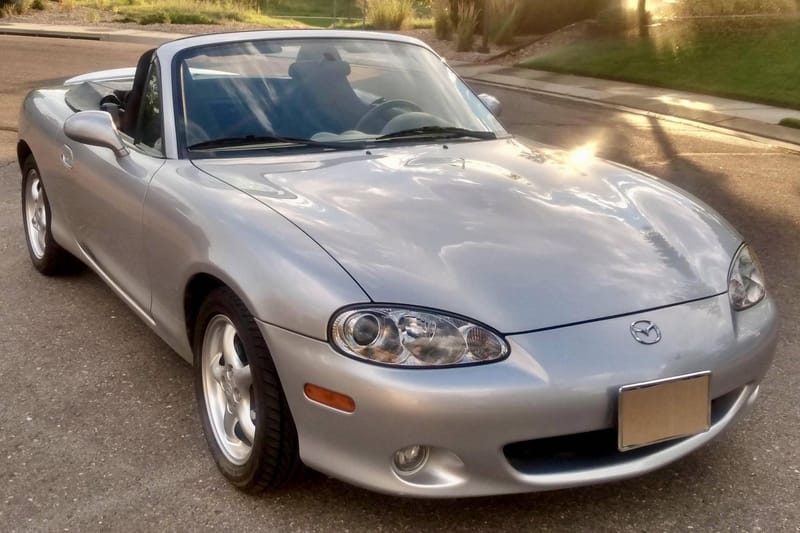Track Day Preparation Checklist for Miata Owners
Track days push your Miata to its limits, demanding proper prep for safety, reliability, and peak performance. This guide covers must-do maintenance, brake upgrades, tire setup, and key safety gear. Get the most out of your laps with expert tips on setup, driving technique, and post-track check-ups!
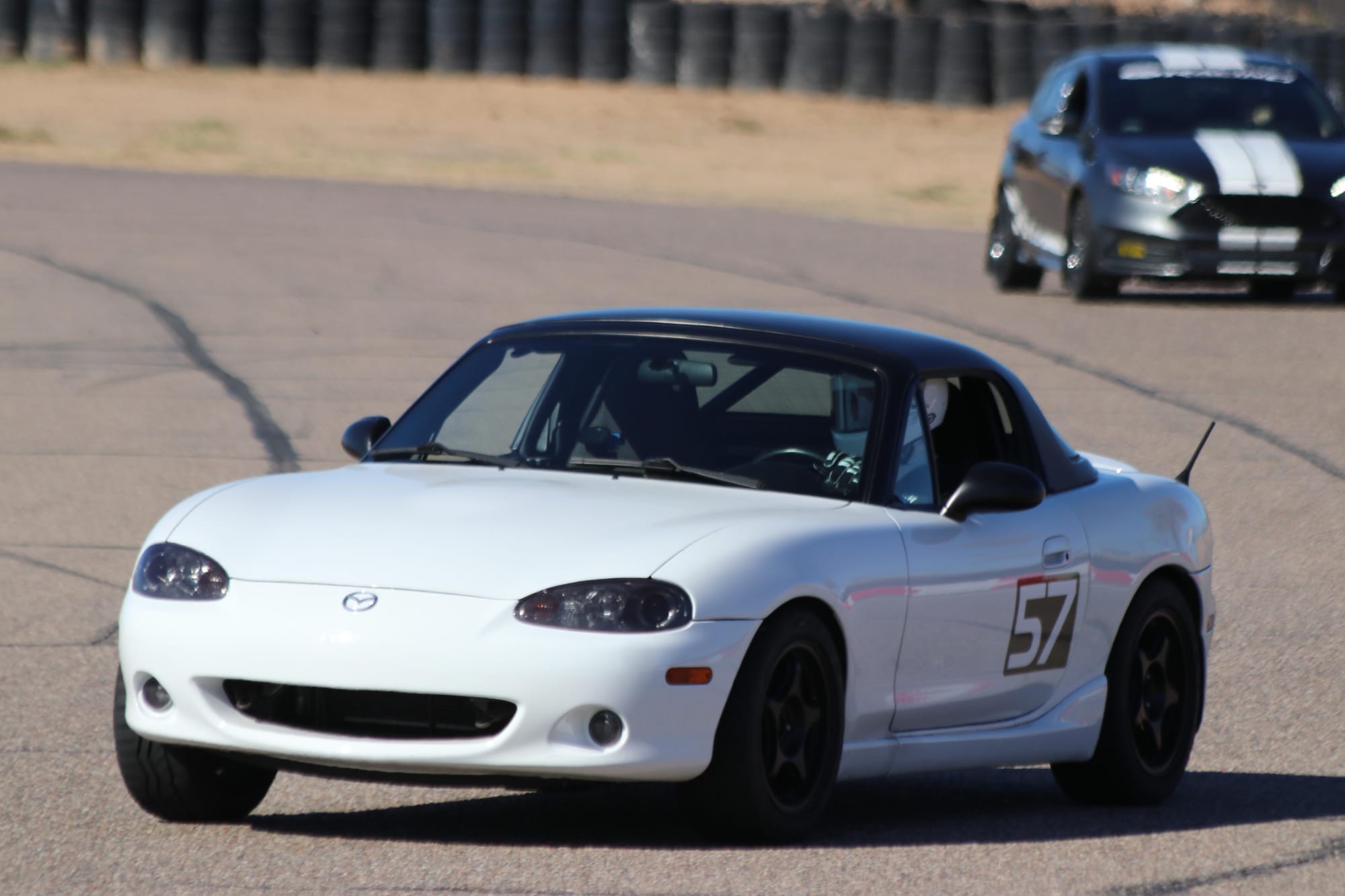
Miatas are famously fun, lightweight sports cars that really come alive on a racetrack. A track day, however, puts much greater strain on every part of a vehicle compared to ordinary street driving. Brakes get hotter faster, tires face higher cornering loads, and the engine operates at sustained high RPM. Taking a few extra steps to prepare a Miata for these conditions can mean the difference between spending all day enjoying laps and spending it dealing with breakdowns. Preparation is key to ensure safety, reliability, and performance.
Why Preparation Matters
Going through a thorough prep routine before heading to a track day serves three essential goals: safety, reliability, and performance. When pushing a Miata near its limits, every component, brakes, tires, suspension, and cooling system, experiences significant stress. Having fresh fluids, properly functioning brakes, and solid suspension parts helps guard against failures that can endanger both driver and car. Reliability is equally important because track time is often expensive; nobody wants to lose precious laps fixing preventable issues. Finally, a properly prepared Miata allows more confidence when exploring its handling capabilities. Feeling secure in the car’s readiness can help focus on improving driving technique rather than worrying about what might break next.
Setting Goals and Understanding the Car
The extent of track preparation often depends on personal goals. A first-timer may need nothing beyond the standard safety checks, fresh oil, good brake pads, and decent tires, plus some attention to driving fundamentals. Regular track-goers or those with dedicated track builds can go further with advanced modifications. It’s also worth considering how the car is used off-track. If the Miata is a daily driver, balance is essential to preserve everyday comfort. If it’s nearly a dedicated track car, more aggressive setups can be chosen without worrying about street practicality.
Engine and Drivetrain Checks
In the engine bay, it’s important to start with an oil change. A quality synthetic oil, commonly 5W-30 or 10W-30, can handle the higher heat and sustained stress of track driving more effectively. Pairing it with a good filter ensures proper flow under the increased pressure. Coolant should be in good shape too, and hoses need to be inspected for any cracks or bulges. Older Miatas, especially the NA and NB generations, sometimes have plastic radiator end tanks that can develop leaks over time, so upgrading to an aluminum radiator is a popular choice. The air filter should be clean to avoid restricting airflow, and all intake ducts should be secured to prevent leaks. Spark plugs and wires (or coils) also deserve attention since any misfire under high RPM can spoil a track day. Finally, fresh transmission and differential fluids help the gearbox shift smoothly under intense conditions and protect those components from excess wear.

Braking System Essentials
The braking system can make or break a track experience. The best place to start is with brake pads. A set of street/track hybrid pads, like Hawk HP+, Porterfield R4S, or StopTech Street Performance, strikes a balance between everyday usability and track-ready performance. At least 50% pad thickness is recommended to avoid fading or running out of pad during the event. Rotors should be checked for cracks or deep grooves; anything close to the minimum thickness limit is a risk factor for fade and cracking. Brake fluid is another critical point. Flushing with a DOT 4 fluid is strongly advised because older fluid can have absorbed moisture that will lower its boiling point, risking a spongy or even failing pedal under heavy braking. Brake lines and calipers should also be inspected for leaks or seized slider pins. Upgrading to stainless steel lines often improves pedal feel.
Tires, Wheels, and Alignment
Tires are the only point of contact with the track, so they have a huge impact on grip and handling. For beginners, high-performance street tires in the 200-300 treadwear range are usually the sweet spot. Too much grip (such as with R-compound track tires) can actually mask mistakes and lead to less learning. It’s also crucial to check for dry rot, bubbles, or excessive wear, as well as the manufacturing date to avoid running on old rubber. Wheels need a close inspection for cracks or bends, especially around the inner barrel. Removing any plastic center caps is recommended because they can melt under track heat.
Alignment adjustments can further enhance handling. Miatas typically benefit from negative camber angles in the range of -2.0° to -2.5° in front and -2.0° to -2.8° in the rear. Mild toe-out in the front sharpens turn-in, while a bit of toe-in on the rear can enhance stability. Suspension components, including bushings, ball joints, shocks, and springs, all need a once-over for leaks or play, since worn parts can create unpredictable handling.

Safety First: Roll Bars and Helmets
Convertibles must meet specific safety requirements at many track events. Aftermarket roll bars from brands like Hard Dog, Blackbird Fabworx, or Autopower are commonly accepted. These roll bars should have diagonal braces and be firmly mounted to the car’s structure. While NC and ND Miatas often have factory roll hoops, many organizations still require a proper roll bar for advanced or higher-speed sessions. A hardtop can offer some protection and improved aerodynamics, but it’s rarely a substitute for an actual roll bar.
A Snell-rated helmet (preferably SA2015, SA2020, or the most current rating) is also necessary. Fit is crucial, too loose and it can slide around at high speed, too tight and it becomes uncomfortable. Full-face helmets are often preferred in convertibles for extra face protection, but it’s always best to confirm the event’s rules before finalizing helmet choice. Clothing should be long pants and long sleeves made of natural fibers like cotton or specialized fire-retardant materials. Driving shoes with thin soles improve pedal feel and safety, and gloves can help with grip and sweat absorption, although they’re not always required.
Pre-Track Logistics and Planning
Before arriving at the track, checking the event’s registration and tech inspection requirements can save headaches on the day. Some track organizers require an official tech inspection, while others accept a detailed self-inspection form. Insurance is another consideration, typical auto policies might not cover incidents on a racetrack, so a dedicated track-day policy can be worth exploring. Think about towing options in case of a breakdown: membership in a roadside assistance program or having a friend with a trailer might prove invaluable.
It’s also helpful to pack some basic tools and spare parts: a torque wrench, tire pressure gauge, socket set, extra fluids (engine oil, brake fluid, coolant), zip ties, and duct tape. A small fire extinguisher, first-aid kit, paper towels, and cleaning rags can handle unexpected minor emergencies. Fuel planning is another aspect to consider. Arriving with a full tank is wise, especially for older NA/NB Miatas, which can suffer fuel starvation issues if the tank gets too low during hard cornering.

Day-Of Tips
Arriving early allows time to find a paddock space, unload unnecessary items from the trunk and interior, and attend the driver’s meeting. Understanding passing rules, flag signals, and session schedules can make everything run more smoothly. During warm-up laps, it’s best to gradually bring brakes and tires up to operating temperature. Between sessions, a quick inspection for leaks or loose bolts can prevent bigger problems. Checking tire pressures right after a session is important because hot pressures will rise a few psi, and adjustments might be needed to maintain consistent handling. If an off-track excursion or spin happens, pushing the clutch in (for manuals) prevents stalling and allows a safe re-entry when directed by corner workers.
Improving Driving Technique
A track day is an excellent opportunity to learn. Instruction, whether in the form of ride-alongs or lead-follow laps, is the fastest way to improve driving skills. Smooth steering, brake, and throttle inputs help keep a Miata balanced in corners. Overly stiff modifications or overly sticky tires can mask mistakes, so it’s often suggested to start with a relatively mild setup and only upgrade once the driver outgrows the car’s capabilities. Mirrors and situational awareness remain crucial: giving point-bys to faster cars and respecting passing zones creates a safer, more enjoyable environment for everyone.

Post-Track Check-Up
After the last session, letting the car cool down is a good idea. Opening the hood can help engine heat dissipate more quickly. Inspecting the tires for unusual wear patterns, chunking, or debris, and then re-checking fluids can alert drivers to any developing problems. It’s common to re-torque lug nuts (Miatas typically call for 85-90 ft-lb) before driving home. For some, a post-track oil change is a nice practice to remove any contaminants that might have built up under hard use. Taking notes about any noises or handling quirks can be helpful for diagnosing issues before the next event.
Tips & Common Pitfalls
Staying hydrated is often overlooked but crucial for maintaining focus on track, especially in warm weather. Fatigue tends to set in toward the end of the day, so it’s smart to avoid “hero runs” during the last session. Even experienced track enthusiasts occasionally neglect simple checks, so a quick routine before each session, a final look at lug nuts, tire pressures, and fluid levels, can prevent last-minute troubles. The Miata community is known for being helpful, so don’t hesitate to chat with other owners. Sharing preparation tips, recommended setups, and on-track experiences can make the entire event more rewarding.
Thoroughly preparing a Miata for a track day doesn’t need to be stressful or overly expensive. Focusing on fundamental checks, like oil condition, brake readiness, tire health, and safety gear, goes a long way toward ensuring a safe, fun day of high-speed laps. It’s always wise to respect both personal driving limits and the car’s mechanical limits, working on driving technique step by step. The ultimate goal is to enjoy the Miata’s legendary handling in a controlled environment. With the right prep and mindset, a track day can be one of the most satisfying experiences behind the wheel of any sports car, and a Miata is the perfect partner for that adventure.

